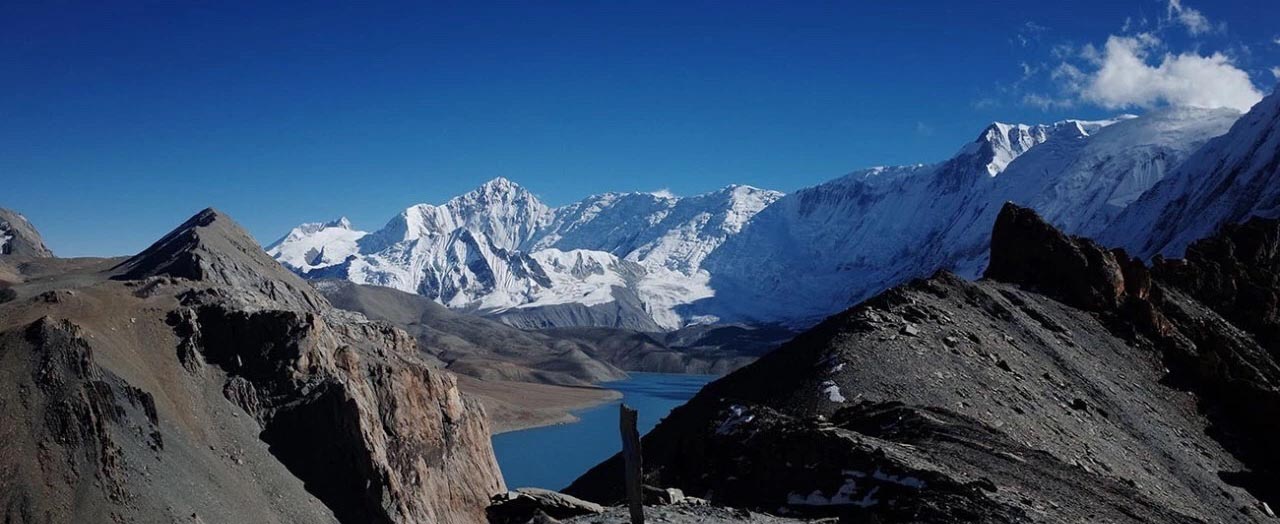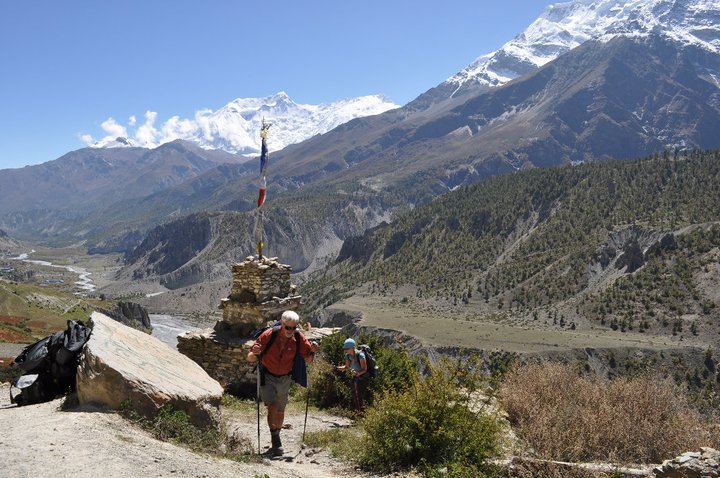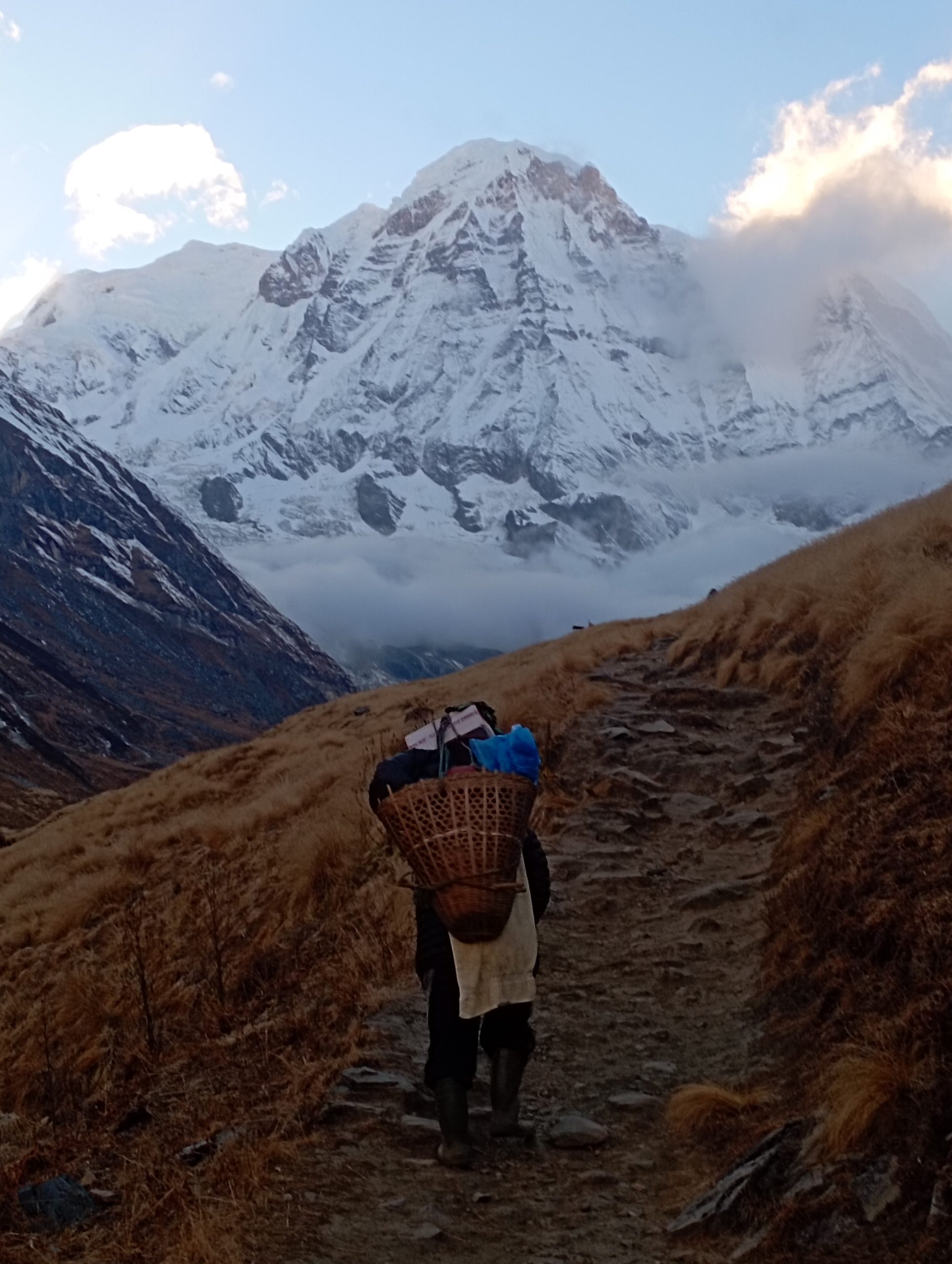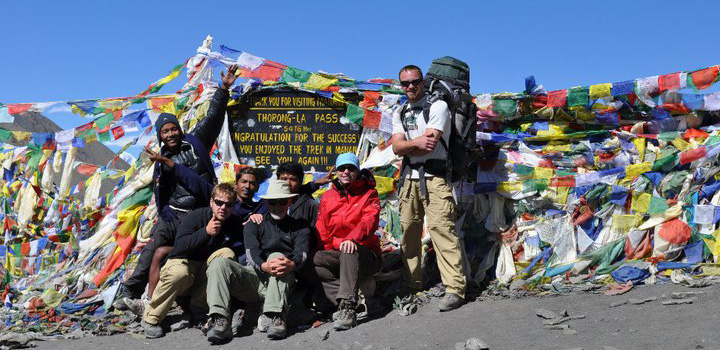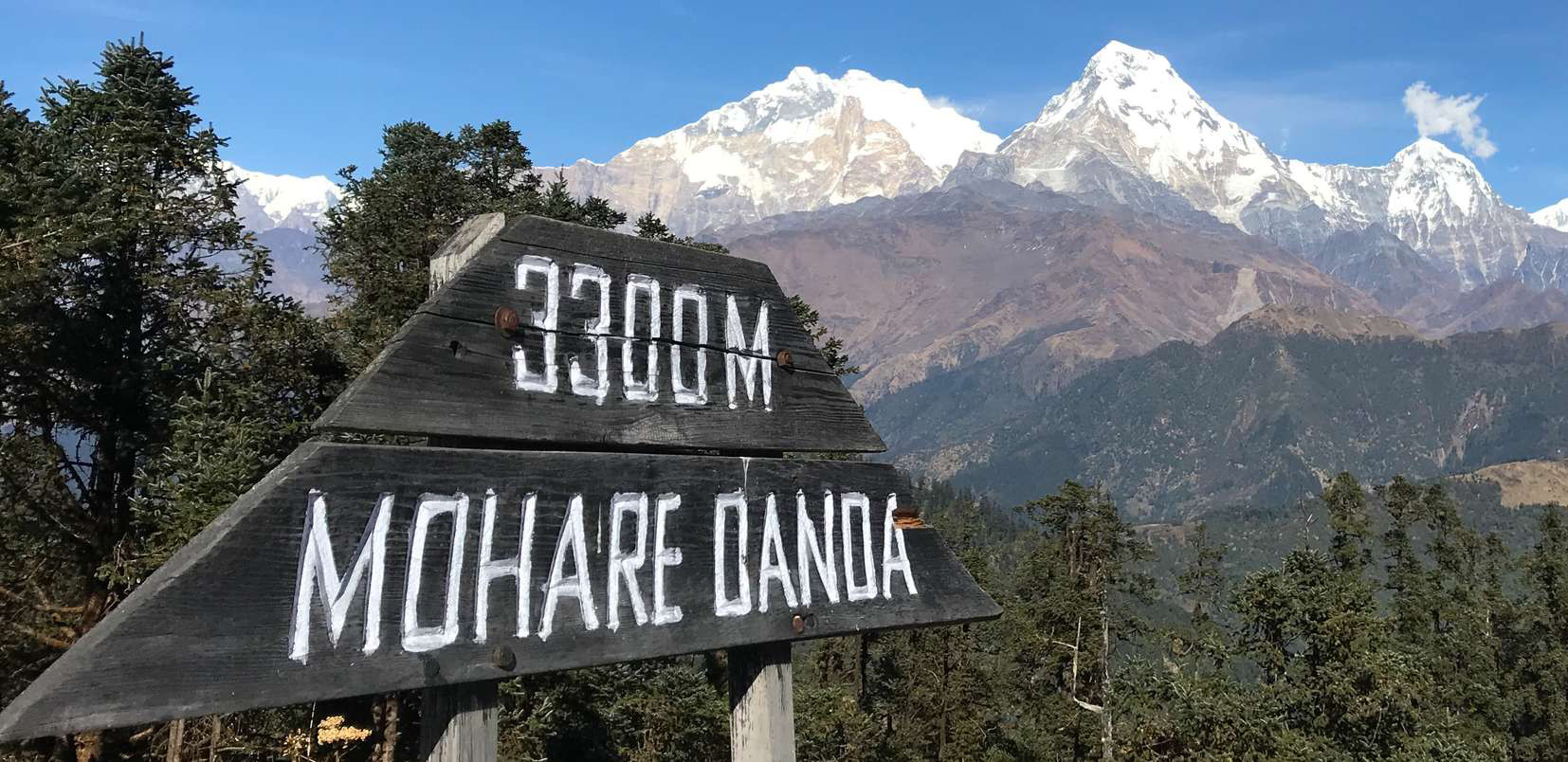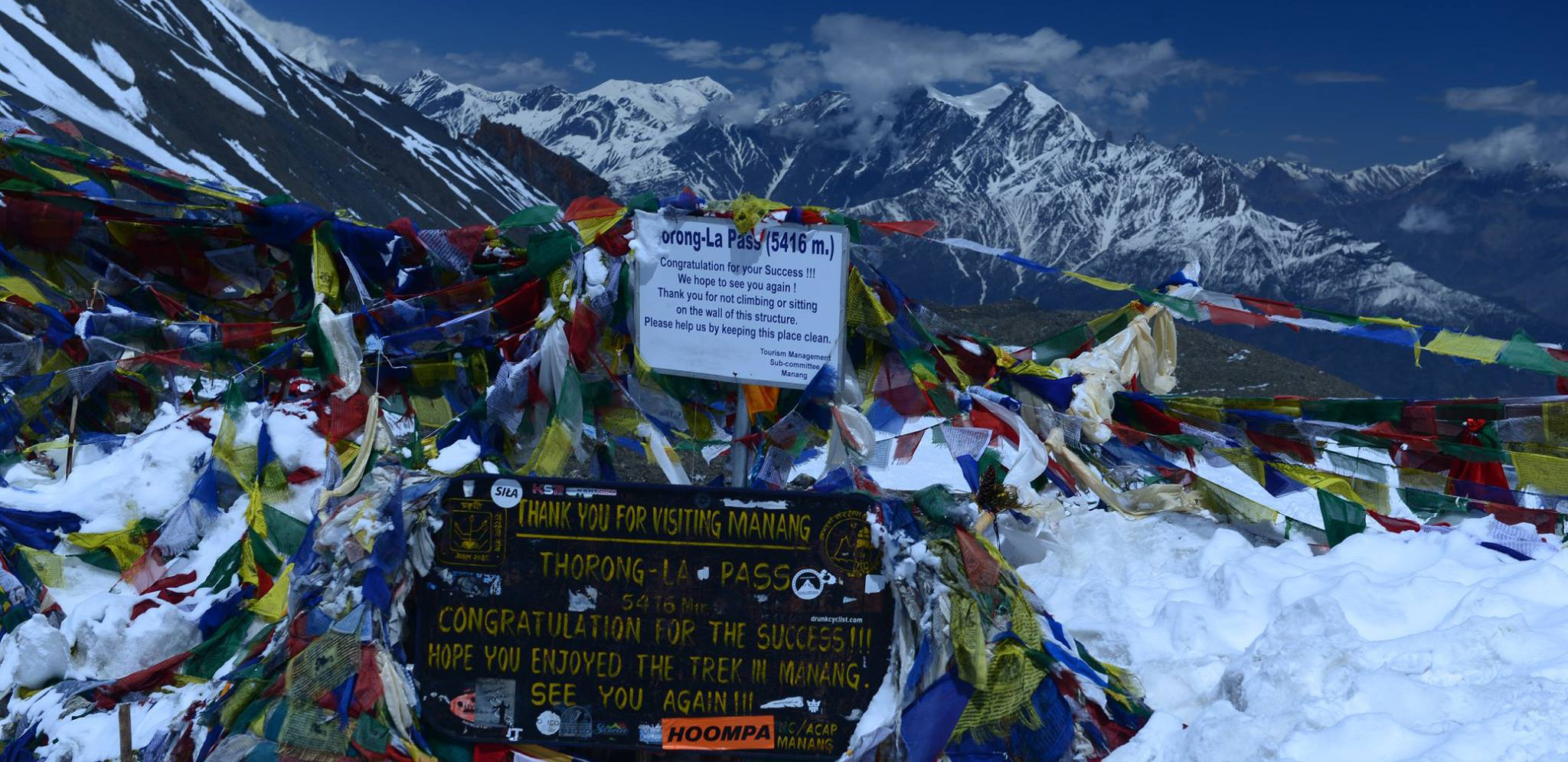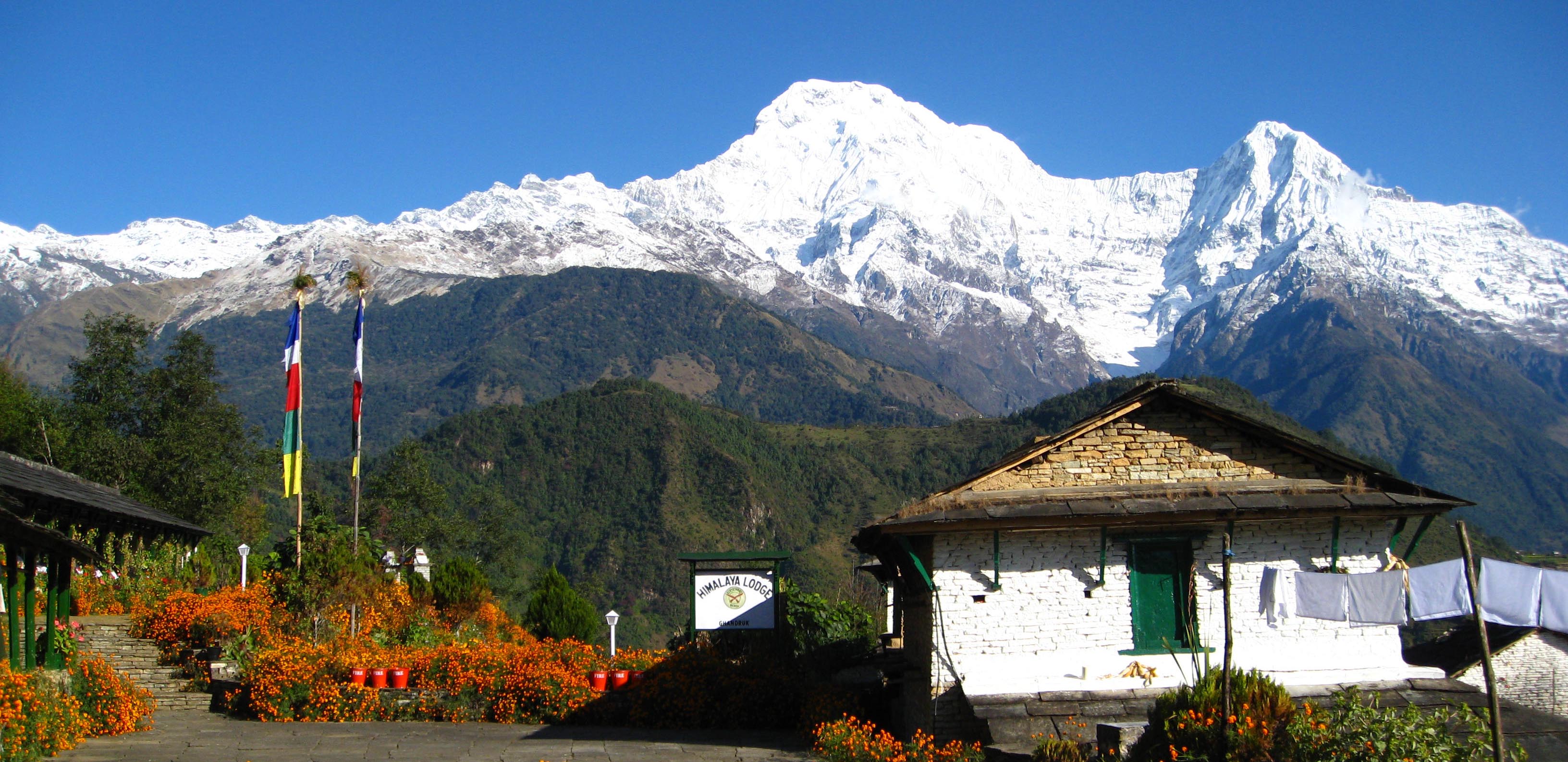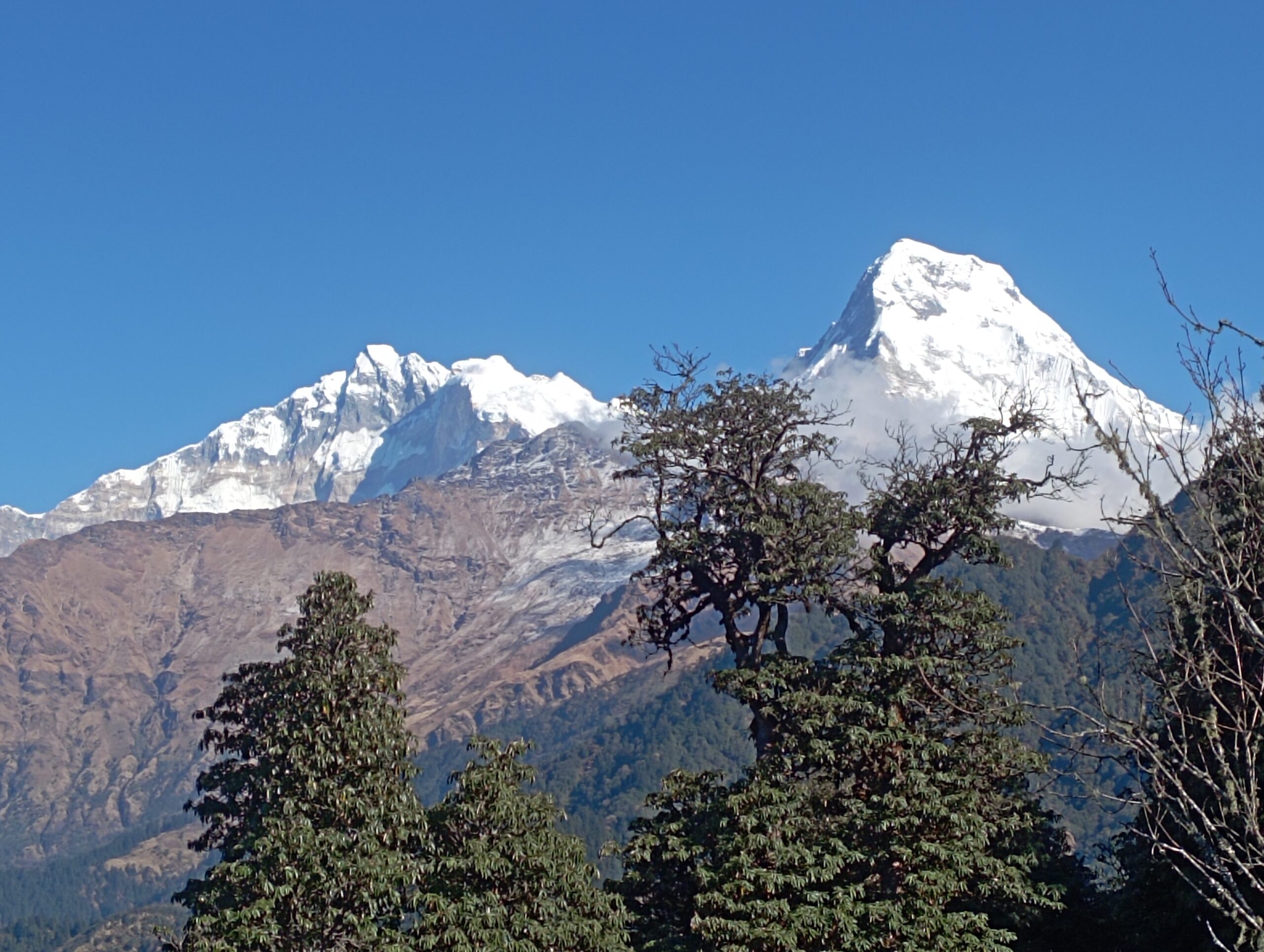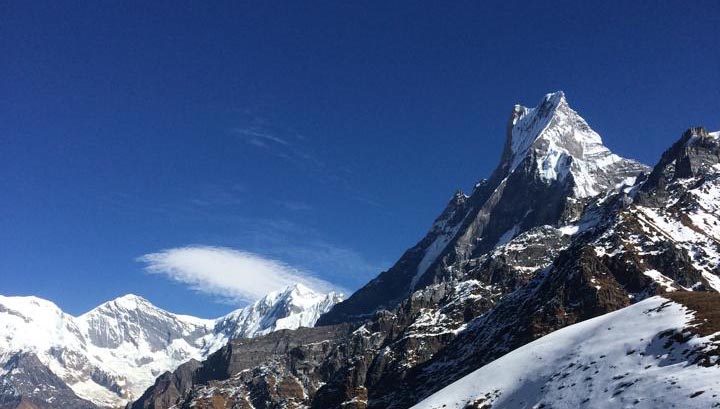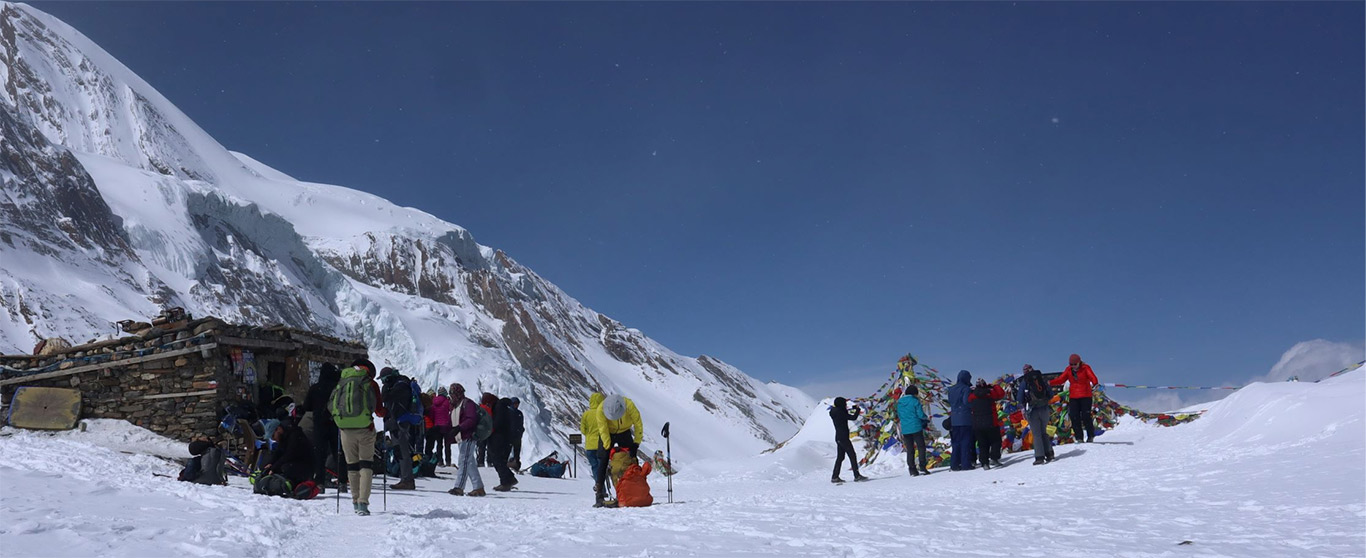Tilicho Lake Trek
Tilicho Lake is known as the world’s highest-altitude lake located in Manang District of Nepal in the Annapurna range at an altitude of 4919m. Among the different treks in the Annapurna regions, Tilicho Lake Trek undoubtedly provides some majestic panoramic views, a great variety of culture and diversity, the finest deep valleys, and high mountains encircling the giant Annapurna Himal. This place is rich with a wide range of people and terrain. Sub-tropical to a high, dry landscape also resembles the Tibetan Plateau. The trail brings you to a fine village inhabited by a wide diversity of people from different ethnic groups.
Tilicho Lake Trek starts from Besisahar to the famous Annapurna circuit route. The route goes along the Marsyangdi River valley, with amazing views of Manaslu and Himal Chuli to the east. Every day we will see the different landscapes. The trail begins in a subtropical climate and ascends to the snow line as it progresses. For the nature lover, it is a magnificent and real opportunity to see a lake at this altitude. And it is also famous for its religious point of view.
After visiting the lake, the trail moves to Yak Kharka and joins the normal route crossing the Thorong La Pass (5416m). We will also visit Muktinath via the Plateau of Kagbeni and finally return to Jomsom. On the trail, we pass through different types of vegetation zone from lush sub-tropical to harsh semi-desert and also the highest trekking passes in the world.
Tilicho Lake Trek is also familiar as a high-altitude lake trek. It will keep you regaling your experiences for years to come. Take the challenge of this difficult trek and the rewards will be unlimited and true once in a lifetime. Tilicho Lake will be a suitable destination for those travelers who aspire to venture into some of the less-trodden remote regions of Nepal apart from the regular trekking routes.
Day 01: Kathmandu Arrival(1,300m/4,264ft)
Day 02: Kathmandu Valley Sightseeing.
Day 03: Drive Kathmandu to Syange/ Jagat (1330m).
Day 04: Trek from Syange/Jagat to Dharapani (1960m).
Day 05: Dharapani to Chame (2630m).
Day 06: Chame to Pisang (3210m).
Day 07: Pisang to Manang (3540m).
Day 08: Acclimatization day at Manang.
Day 09: Manang to Khangsar village (3734m).
Day 10: Trek from Khangsar Village to Tilicho Lake Base Camp (4150m).
Day 11: Base camp to Tilicho Lake (4920m) and trek back to base camp.
Day 12: Trek from Tilicho base camp to Yak Kharka (4000m).
Day 13: Trek from Yak Kharka to Phedi (4420m).
Day 14: Trek from Phedi to Muktinath (3800m).
Day 15: From Muktinath to Jomsom (2713m) via Kagbeni (2810m).
Day 16: Jomsom to Pokhara.
Day 17: Drive back from Pokhara to Kathmandu,(6-7hr).
Day 18: Departure.
Day 01: Kathmandu Arrival(1,300m/4,264ft)
A representative from Himalayan Sanctuary Adventure will pick you up from the international airport and take you to your hotel for overnight
Day 02: Kathmandu Valley Sightseeing.
After breakfast, you will Proceed to Boudhanath Stupa, Pashupatinath Temple Patan Durbar Square, and Swayambhunath Stupa. Swayambhunath is a Buddhist Stupa said to be more than 2000 years old, is perched on a hillock 77 meters above the valley floor, and offering a bird’s eye view of Kathmandu City. Afternoon, tour of Patan, also known as Lalitpur or the “city of beauty” is the oldest city in the valley. A great center both for the Newari Buddhist religion and for traditional arts & crafts with 136 bahals or courtyards and 55 major temples. Overnight at your hotel in Kathmandu
Included meals: Breakfast
Day 03 Drive Kathmandu to Syange/ Jagat (1330m).
Early morning we drive from Kathmandu for about 8 hours to the village of Syange. En route, we can see many beautiful villages, farms, flowing rivers, and a glimpse of beautiful mountain ranges.
Included Meals: Breakfast, Lunch, and Dinner
Day 04 : Syange/Jagat trekking to Dharapani (1960m).
After breakfast we begin our trek, we cross a suspension bridge and after a steep climb we enter the vicinity of Manang region at the village named Tal .here we see several waterfalls forming a river by the sandy beaches. We follow a trail through barley, rice, and potato fields. and pass through the village of Kodo which is one of the biggest villages in the Manang valley. We cross a suspension bridge, and after a short climb of the stone Kani we reach Dharapani.
Included Meal: Breakfast, Lunch, and, Dinner
Day 05: Dharapani trek to Chame (2630m).
Today we follow the trail through a forest with pine, fir, oak, and maple trees by a river to reach Chame, the district headquarter of Manang district. We’ll be surrounded by the green forest around us and over us we’ll see remarkable views of Lamjung Himal, Annapurna II, and Annapurna IV (7,525m). We’ll also stop by a small hot spring where we can relax for a while.
Included Meal:Breakfast, Lunch, and Dinner
Day 06: Chame to Pisang (3210m).
We walk through a steep and narrow valley to have our first view of Paungda Danda’s rock face, a curved rock face rising 1500m from the river. From here, we also see clear views of Annapurna 2 to the south and Pisang Peak to the northeast. Next, we descend to the Manang Valley floor.
Included Meals: Breakfast, Lunch, and Dinner
Day 07: Pisang to Manang (3540m).
We trek on the upper trail through Upper Pisang via Geru, we choose this trail as it offers outstanding views of the north face of Annapurna II, III, IV, Gangapurna, Tilicho, and Pisang Peak .as we ascend well feel the air turn cold, dry and harsher. The trail goes through Tibetan settlements and we get a chance to explore Buddhist culture in a short visit to Barge Monastery, the largest in Manang.
Included Meals: Breakfast, Lunch, and Dinner
Day 08: Acclimatization day at Manang.
This day you spend the second night in the Manang region to acclimatize to the higher elevations you will encounter towards the Thorung La. Take advice from the Himalayan Rescue Association and observe the spectacular views of the Himalayas nearby. There are fine views of the milky blue glacier lake at the foot of the spectacular Gangapurna icefall and traditional stone buildings. You can explore Khangsur Village, Kecho Lake, or Milarepa Cave.
Included Meals: Breakfast, Lunch and Dinner
Day 09: Manang trekking to Khangsar village (3734m).
Descending from old Manang and passing by Chorten reach a Marsyangdi river, cross a suspension bridge over Jharsing Khola (stream It is possible to cross the ridge north of Annapurna IV, II, and Glacier Dome or descend from the village to the glacial lake at the foot of a huge icefall descending from the northern slopes of Gangapurna. the trail stays close to the river bed and soon we approach Khangsar, a superb view of the Great Barrier opens up. There you find a small monastery, Chorten, Mani walls, and, prayer flags.
Included Meals: Breakfast, Lunch and Dinner
Day 10: Khangsar Village Trekking to Tilicho Lake base camp (4150m).
From Khangsar the trail climbs steeply past the Gompa and small chortens, the trail goes through juniper and sea buckthorn bushes. The path is quite covered by small crystals and shrubs can be seen on both sides. In some places along the trail, you cross a few streams. You reach a crest (4650m) with prayer flags after the wearying climb and then through a series of zigzags down a scree slope bring you to the Tilicho Base Camp. From here you can enjoy the closer and panoramic views of Tilicho Mountain and many others. Tilicho Lake is situated at the highest altitude so we set our camp today here at low.
Included Meals: Breakfast, Lunch and Dinner
Day 11: Base camp to Tilicho Lake (4920m) and trek back to base camp.
The trail to the Tilicho Starts up a side valley and then traverses onto a moraine, making a long climb to 4710m. There is an outstanding view of Tarkeghyang, Gangapurna, and the Khangsar Kang. Tilicho Lake, the highest lake in the world at (4920m), presents a particularly dramatic spectacle. Sometimes its turquoise water reflects the surrounding peaks but more often it’s frozen solid. After spending a memorable time at Tilicho Lake, we will trek down to Tilicho base camp.
Included Meals: Breakfast, Lunch and Dinner
Day 12: Tilicho base camp trekking to Yak Kharka (4000m).
The trail continues to climb out of the Marsyangdi Valley. The trail follows this valley north, passing a Goths as it steadily gains elevation. You have left the large trees below; the vegetation now consists of scrub juniper and alpine grasses. you can keep high and follow a track 400meters or so above Khangsar village passing through the ruins of old Khangsar and following an unmarked trail that will lead you around and down to cross the river on an old log bridge between Gunsang and Yak Kharka.
Included Meals: Breakfast, Lunch and Dinner
Day 13: Yak Kharka trekking to Phedi (4420m).
From Yak Kharka, the trail climbs along the east bank of the Jarsang Khola, then descends and crosses the stream on a wooden bridge at 4310m. Blue sheep, and even snow-capped leopards, sometimes magically appear. The crow-like bird choughs, large lammergeiers, and Himalayan griffons circle you overhead. It is sometimes possible to see herds of blue mountain sheep at Phedi. Overnight at Phedi 4400m.
Included Meals: Breakfast, Lunch and Dinner
Day 14: Phedi to Muktinath (3800m).
The trail becomes steep immediately after leaving Thorung Phedi, switchbacking up moraines and following rocky ridges as it ascends to the Thorung La pass (5416m). You can see the long Great Barrier ridge, the Tibet-like region of Manang, as well as the Annapurna, Gangapurna, and the heavily glaciated peak of Khatung Kang (6484m). The trail descends crossing meadows steeply down to Muktinath. One of the most important pilgrimage sites for both Hindus and Buddhists. It is also home to many ethnics Tibetans and holy Buddhists.
Included Meals: Breakfast, Lunch and Dinner
Day 15: Muktinath to Jomsom (2713m) via Kagbeni (2810m).
From Muktinath to Jomsom, we see people from Mustang who come to sell handicrafts to pilgrims. Among them, merchandise is the highly revered mollusk fossil called Shaligram. We will pass some ancient caves and view the impressive white snow-capped mountains. The trail stroll among meadows, streams, poplar, and , fruit trees, finally we arrive at Kagbeni a gateway to Upper Mustang; it has to pose Chortens and ochre-colored Gompa and monastery. After lunch in Kagbeni continues trekking to Jomsom on the windy trail of Kali Gandaki Valley, overnight at Jomsom.
Included Meals: Breakfast, Lunch and Dinner
Day 16: Flight from Jomsom to Pokhara.
In the early morning, we will take a short flight to Pokhara. The view of Annapurna and Dhaulagiri mountains and the world’s deepest gorge, Kali Gandaki is stunning. Relax the whole day in Hotel or wander around Lake Side with its fascinating mountains panorama view and nature charming. Explore the various interesting places like Mahendra Cave, David’s Fall, and the various lakes of course.
Included Meal: Breakfast, Lunch, and Dinner
Day 17: Drive back from Pokhara to Kathmandu,(6- 7 hr).
After breakfast, we drive back to Kathmandu on a tourist bus. You may also choose to return by a 25 minute flight (not included in the package) adding Extra cost.
Included Meal: Breakfast
Day 18: Departure.
Our driver will take you to Tribhuvan International Airport 3 hours before the schedule to Catch the flight for your onward Destination.
Included Meal: Breakfast
Cost Included
- Airport Transfers.
- 3 Star Category hotel Accommodation in Kathmandu and Pokhara on a twin-sharing basis including Breakfast.
- Kathmandu Valley Sightseeing by private vehicle.
- Government license holder experienced, trekking Guide and porters (1 porter for 2 trekkers) with their food, accommodation, salary, equipment, and accidental insurance, clothing, and medicine.
- Tea house/Lodges Accommodation including Breakfast, Lunch, and Dinner during the trekking.
- Annapurna Conservation Area Trekking Permit.
- TIMS Trekking Permit (Trekking Information Management System) Card for the Annapurna Trek
- Himalayan Sanctuary Adventure Duffel Bag.
- Kathmandu to Besisahar Transport by Local Bus to Syange ( private vehicles are available by adding extra cost).
- Jomsom Pokhara Flight
- Pokhara to Kathmandu transport by tourist bus. (if you want to take a flight or want to travel by private vehicle is available, by adding extra cost).
- Farewell Nepali Dinner in Kathmandu.
- All Government and Applicable Taxes.
Cost Excluded
- Lunch and dinner in Kathmandu & Pokhara.
- Entrance Fee and Tour Guide for Sightseeing
- Extra night accommodation in case of early return from Trekking.
- Nepal entry visa fee, you can get a Nepal visa upon arrival at the Airport.
- International Airfare/Airport tax, Kathmandu City tour Sightseeing entry fees.
- Personal expenses such as Alcoholic drinks, hot showers, Mineral/ hot water, and Desserts. laundry, Tea, Coffee, hot and cold drinks, telephone calls, sweets, snacks, beverages and bar bills, and camera battery charging.
- Travel Insurance (Essential – Should include emergency evacuation coverage while trekking up to 5500+ meters).
- Personal trekking gear
- Tips for tour/ trekking staff and driver
This equipment list is only a guideline. We are pleased to offer our checklist for your reference as below, however, you can choose from your preferred brands using your expertise. The necessary equipment and clothing as mentioned below can be easily purchased or hired at a reasonable price at stores in Thamel, Kathmandu.
General Item
- Duffel or Rucksack bag: Big duffel bag/suitcase is necessary for non-trek items left at the hotel in Kathmandu)
- Down Jacket: (Your own Down Jacket and sleeping bag are strongly recommended)
Head
- Sun hat or scarf
- Light balaclava or warm fleece hat
- Sunglasses with UV protection
Feet
- Thin, lightweight inner socks
- Thick, warm wool hiking socks
- Hiking boots with spare laces
- Camp shoes (sneakers and/or sandals)
- Gaiters for hiking in winter
Hands
- Lightweight gloves
- Heavyweight gloves or mittens
- With a waterproof shell outer (Seasonal
Lower Body
- Under Garments
- Hiking shorts
- Lightweight cotton long pants
- Light and expedition-weight thermal bottoms
- Fleece or wool pants (seasonal)
- Waterproof (preferably breathable fabric) shell pants
Upper Body
- T-shirts
- Light and expedition-weight thermal tops
- Fleece jacket or pullover
- Fleece Wind-Stopper jacket (Optional)
- Waterproof (preferably breathable fabric) shell jacket
Accessories
- Sleeping bag
- Headlamp (e.g. Petzl Zoom) with spare bulbs and batteries
- A small pad or combination lock-to-lock
- Trekking Bags/Duffel bags
- Basic First Aid Kit
- Large plastic bags – for keeping items dry inside trek bag
- Day pack (Approximately 20-22 Litre)
- Trekking Poles
- Water bottles
- Toiletries (Small wash towel, Toilet paper, etc.)
- Ear Plug (who knows some people in the group are snoring)
Optional
- Toothbrush/paste
- Multipurpose soap
- Nail cutter
- Small mirror
Personal Hygiene:
- Wet wipes
- Tissue /toilet roll
- Anti-bacterial hands wash
Extras/Luxuries
- Binoculars
- Reading book
- Trail Map/Guide book
- Journal & Pen
- Pencils and small notebooks
- Travel game i.e., cards
What type of shape do I need to be in, is this trip for me?
Trek in the Annapurna region is suitable for average people who are moderately fit, thus no previous experience is required. Some physical fitness programs such as running, swimming, and hiking is recommended before you embark on your journey.
Persons suffering from a pre-existing medical condition must seek medical advice/consent before considering the trek.
Is it possible to reserve a trip now and pay a deposit later or do I Have to pay a deposit at booking/reservation?
Yes! The trip will be confirmed only when we receive the completed final booking form and a 30% deposit payment. You can pay the balance of the money when you arrive in Kathmandu.
Will somebody come to pick me up from the airport upon my arrival?
Yes, our airport representative from Himalayan sanctuary adventure will be there to greet you at the airport. They will be displaying your name outside the arrival terminal and then you will be transferred to your hotel overnight.
What sort of accommodation can I expect in Kathmandu, Pokhara, and in trekking?
We use standard rooms at 2-star Category hotels in Kathmandu and Pokhara including breakfast. Along the trekking routes, teahouses/lodges generally provide basic clean facilities with a mattress and a quilt or blanket. We recommend you have sleeping bags, it is a good idea to always have your sleeping equipment. The lodges in trekking routes usually provide single and double rooms, or occasionally a dormitory style. At times when possible, dining will be around a bonfire. In teahouses, food will be prepared in the kitchen, which you should not enter without permission. The toilet in teahouses provides essential but basic facilities and is always outside the room.
Are the guesthouses heated?
The guesthouse does not facilitate with heater or air conditioner. However as it gets colder above 3,500m, they do have the facility of hitting the dining area by providing kerosene or metal heater. USD 1 to USD 3 per person would be applicable to use this service and this is payable directly to the guesthouse.
Where do we go to the toilet along the trail?
Wherever possible we utilize the toilet facilities provided by the tea houses/lodges on the trail. However, in case of emergency trekkers are recommended to find a private, scenic spot!
What are the Toilet facilities in the tea house/guesthouse?
Most of the tea houses do have western style western-style style western-style flushing toilets however tea houses at higher elevations you could find squat toilets made of either a ceramic basin on the ground or a few planks precariously positioned over a hole in the ground which is always outside.
What is the best season for this trekking?
Our trekking season extends from mid-September to May. From early September the monsoonal rains decrease. By the end of September through to December, the weather is usually stable with mild to warm days, and cold nights. February, March, April, May, October, and November is the best Time.
Is the food in the mountain prepared to international standards in terms of safety?
Yes, the food is very safe during the trekking but we recommend you eat vegetarian and local food.
Is water provided and is there still water available at higher altitudes? Is it filtered/boiled?
Bottled water is easily available at the lodges and tea houses where you can buy bottled water at the cost of USD 2 at lower elevations to USD 4 at higher elevation per littler. You can also drink the normal tap or spring water if you bring the purifying aid with you.
Is there a possibility of getting separate rooms for the trip? If so how much extra will this cost?
Normally, The lodges have twin-sharing and dormitory-styled rooms. The lodges will provide a private room for one person when available. In Kathmandu, USD 45 Per Room per Night would be added as a single supplement fee. The single supplements are always guaranteed in Kathmandu but not in the mountains especially during the peak time.
What immunizations will I need?
No vaccinations are compulsory in the Himalayas, but we do recommend you are covered for diphtheria & TB, hepatitis A, hepatitis B, Malaria, typhoid, polio, and tetanus. We also recommend: A dental check-up before traveling. That you know your blood group in case of emergency.
What if I am very sick in the mountain
Our guides are 24 hours available for services during the trek. They are trained to use the first aid kit and have the knowledge to use an Oxy meter. They are very much aware that the higher the altitude the oxygen level gets lesser so to get updated on the oxygen level of our client and to know whether they are fit enough or need extra precautions to continue. Guides carry local sim cards both for Nepal Telecom and Ncell to update the whereabouts and the situation of every client.
Can I obtain a visa for Nepal upon arrival at the airport?
Yes, you can obtain a visa easily upon your arrival at Tribhuvan International Airport in Kathmandu. A tourist Visa with Multiple Entries for 30 days can be obtained by paying US $ 40 or equivalent foreign currency. Similarly, a Tourist Visa with Multiple Entries for 90 days can be obtained by paying US $ 100. Please bring 2 copies of passport-size photos.
How much additional money do I need per day?
It depends on your spending habits. Generally, in Kathmandu and Pokhara, you can allocate USD 10 to USD 15 for lunch and dinner. USD 20 to USD 30 per person a day will be enough to buy meals, bottles of water, and chocolates, pay for the hot shower, and a few drinks during the trekking.
Can I use credit cards in the places I visit in trekking?
In Kathmandu and Pokhara, yes – to some extent. Once you are out of the cities, all you need is cash. Please change the currency to local Nepali Rupees before you go to the mountains.
What mode of transportation do you use?
We provide you only those options, which enhance your local experience while allowing you to travel comfortably and efficiently. We use private tourist vehicles for sightseeing, city tours, and pick-ups. Depending on the group size we use cars, minibuses, vans, and tourist bus to and from Kathmandu/ Pokhara.
Is water provided and is there water for drinking available at higher altitudes? Is it filtered/boiled?
Bottled water is easily available at the lodges and tea houses so can buy bottled water at the cost of USD 2 to USD 3 per litter. You can also drink the normal tap or spring water if you bring the purifying aid with you.
| Start Date | End Date | Price in USD | Availability | Booking | Note |
|---|
Avabillity Options
OPEN: This date is available and open for bookings. Go for it!
GUARANTEED: Guaranteed departure. Seat Available.
LIMITED: Guaranteed departure, Limited seat. You can send booking request for availability.
FULL:This date is currently unavailable. Please contact us if you are interested in traveling on this date.

